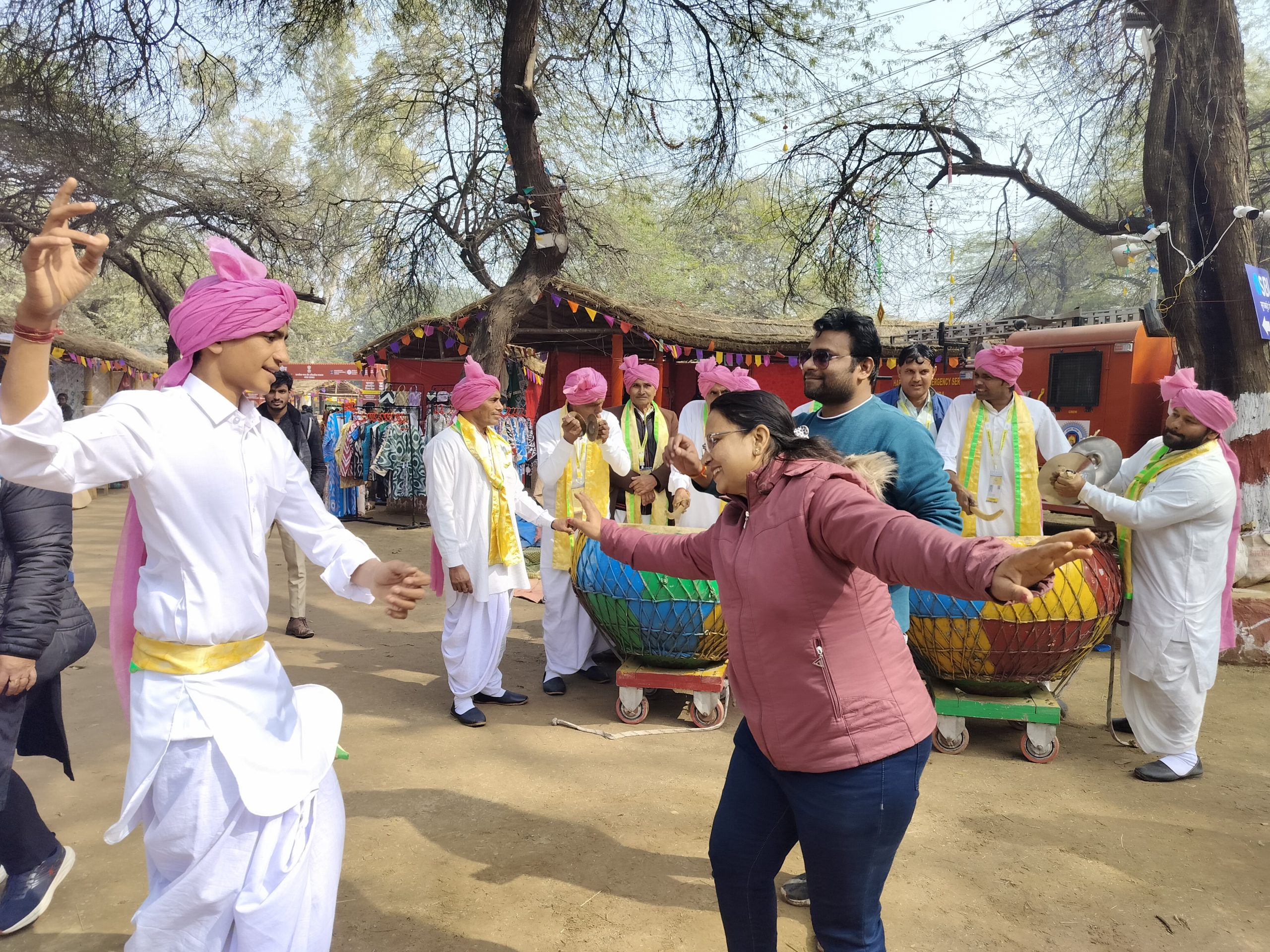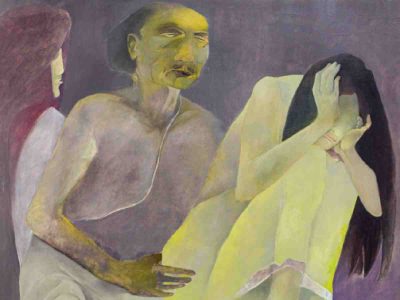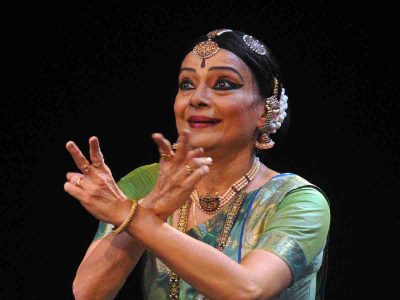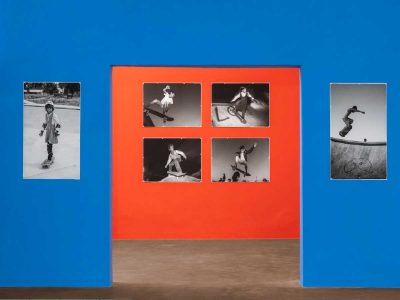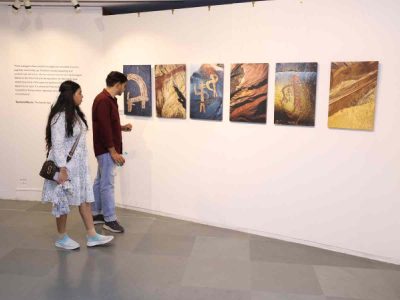The Surajkund Crafts Mela, an annual event organised by Haryana Tourism in Faridabad, has brought together artisans from more than 50 countries for the first time.
This mix of cultures from South Asia, Africa, and Europe has added an international touch to the event, inaugurated by President Droupadi Murmu on February 2, displaying a diverse range of traditional crafts and promoting large-scale cultural exchange.
“It is a growing festival. A decade ago, nobody would’ve thought the President would inaugurate it. Times have changed, and the mela (fair) has become truly special,” said Pankaj Das, 32, an e-rickshaw driver who was ferrying visitors to gate number one of the mela, which is set against the backdrop of the Surajkund Lake, creating a picturesque setting for visitors.
“Each year marks progress, and the fact that our honourable President has inaugurated the fair is a testament to its grandeur and importance,” highlighted Jaideep Meena from the fair’s administration department.
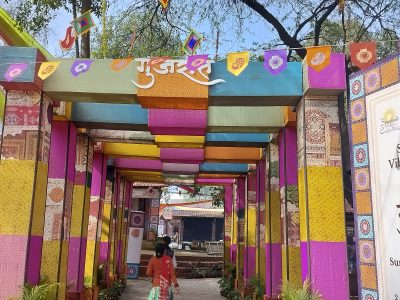
Artisans from various parts of India and other countries converge to exhibit their exquisite handcrafted products, ranging from pottery and textiles to woodwork and metalware. Visitors can explore the rich cultural heritage of different states through the intricate craftsmanship on display.
Artisans from West Asia and Africa
Amal About Dish, a 50-year-old artisan from Jordan, is visiting the Surajkund fair for the second time.
“I love India since I was a child. There’s so much warmth and comfort in just being around Indians. I tell my children about Indian culture and how vibrant is everything here,” shared Dish while setting up her stall.
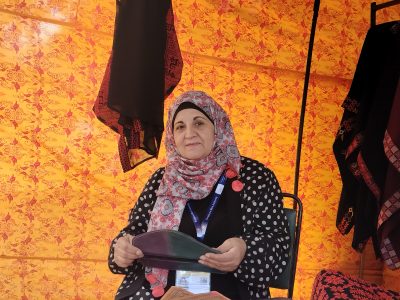
Amal added, “These are all hand-woven kurtas and the prices vary from piece to piece, starting from Rs 1,400 to Rs 20,000. Last year too I clocked good sales here and I am looking forward to more sales this year. I have been delighted to witness first-hand the deep appreciation that Indian consumers have for hand-woven craftsmanship. It’s truly heartening to see how they value the intricate work and stories woven into each piece. The attention to detail and the cultural significance attached to handcrafted items resonate strongly with the people here.”
Lwazi Mlambo from Eswatini (formerly Swaziland) is selling traditional jewellery made from Chakanda plant. She knows English, which makes it easy for her to converse better than South African artisans, who speak Zulu and Xhosa, in a nearby stall.
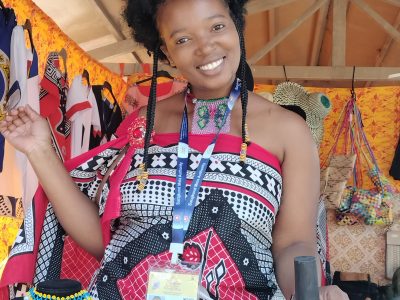
“These neck pieces are part of traditional jewellery made from seeds of the Chakanda plant, often worn for cultural or decorative purposes. The seeds are typically strung together to create a unique and visually appealing accessory. There’s no skin rash problem upon wearing them,” said Lwazi to visitors to the stall.
Her wares are from Rs 180 onwards.
Syria has a rich artistic tradition especially in woodwork. Syrian woodwork is highly regarded for its intricate designs and skilled craftsmanship. Artisans often create wooden furniture, doors, and decorative items adorned with geometric patterns and intricate carvings, reflecting the country’s cultural heritage.
Iskandar Istatafan, hailing from Damascus, who talked to Patriot last year also, expressed, “I am pleased to return here; it feels like home to me.
“This is my fifth year at the fair. It takes 2-3 days for us to find our rhythm. I must say the Indian government has always welcomed us with open hearts. Selling a product to visitors isn’t merely a financial transaction; it’s a cultural exchange. They express curiosity about the pieces and our country’s legacy of craftsmanship, which truly excites me, as I thoroughly enjoy narrating stories about my homeland.”
Gujarat’s Textile Extravaganza
Tanzania is the partner nation in the 37th edition of the fair this year, while Gujarat is the theme state. President Murmu anticipates that attendees will have the opportunity to immerse themselves in the diverse and vibrant arts and crafts of Tanzania, like wood-carving, pottery, and weaving.
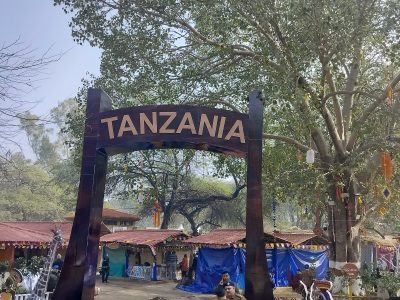
The fair features various traditional fabrics and craftsmanship from different regions of Gujarat, providing visitors with a glimpse into the state’s cultural and textile diversity. Pran Mohan proudly showcases Patola fabric valued at Rs 1 lakh, alongside meticulously hand-woven dupattas worth Rs 9,000, skilfully crafted by artisans from Gandhinagar, Gujarat, at his stall.
“We are extremely proud to be part of the fair. Sab Ram Lalla ki kripa hai! (All thanks to Lord Ram). We hope people understand the value of handcrafted items in our lives,” says Mohan.
There are shawls from Devbhoomi Dwarka and traditional Bandhej tie-dye from Kutch, among other unique items.
Bhutan, India’s eastern neighbours, attracted visitors with its handmade soaps and masks.
“In Bhutan, mask-making is a significant traditional art-form closely tied to religious and cultural practices. These masks are often crafted for religious festivals and dances, such as the popular masked dance known as “Cham”. Each mask is meticulously carved and painted to represent specific deities, demons, or symbolic characters,” said Artisankriti Dema, 24.
Folk beats and cultural showcase
For Poonam Bansal and Manoj Bansal, dancing to the beats of Rajasthani folk songs is the highlight of their annual visit.
“We attend every year, and being from Rajasthan, witnessing the vibrant folk dances with performers donned in glittering attire, bringing strangers together to dance, is truly commendable. I’ve never experienced such a colourful and lively atmosphere in any fair,” shared the Bansals enthusiastically.
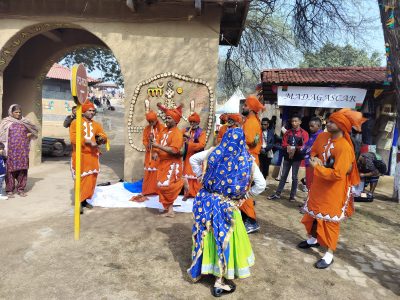
Bansi Nath, aged 60, a member of the Pali Nath Been party, explained, “To perform, we register through the fair’s website or contact the management team. It’s a fulfilling experience to showcase our culture on a global stage like Surajkund. While the joy of representation is paramount, being compensated is appreciated. The payment varies annually; for instance, last year, I received around Rs 800 per day for my performance. The amount isn’t pre-determined and is directly transferred to our bank accounts by the government.”
Numerous open spaces, known as chaupals, are allocated for folk expressions at the mela. These areas host a variety of performances, including the captivating tunes of snake-charmers, as well as the vibrant Santhali and Chhattisgarhi folk dances, alongside the lively Bhangra and Gidda. Festival attendees frequently participate. Furthermore, a specifically designated stage hosts evening classical performances and concerts.
Enchanting selfie points
The organisers have also implemented a new strategy, ensuring visibility for every stall. In the past, certain stalls got overlooked due to the uneven terrain of the land.
Gurpreet, a representative from the mela committee, said they seek improvement through feedback from visitors every year.
The selfie points are meticulously crafted corners, adorned with intricate details.
“The mela boasts an abundance of picturesque spots that tempt me to pause every couple of minutes for a photo. The captivating embellishments, ranging from a Rajasthani haveli-inspired structure adorned with charpai and hookah to enchanting props like decorated cycle rickshaws, exude an aesthetic appeal that is truly Instagram-worthy,” says Monisha Sharma, 44, a visitor from Ghaziabad.
Culinary delights
From street food to regional specialities, the fair also offers gastronomic options that mirror India’s cultural diversity.
“I explored the flavours of Kashmir with Wazwan delights and then savoured Rajasthan’s Dal Baati Churma. Everything was worth trying as it was tasty,” said Rohan Deora, 21, a student of University of Delhi.
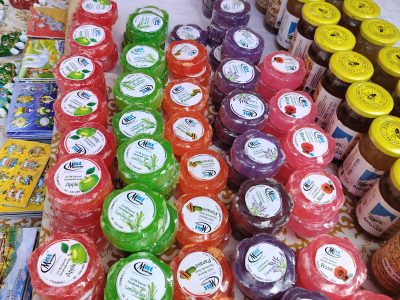
One can experience the taste of Gujarat with dhokla and undhiyu and can’t miss the state’s famous mohanthal. There’s no objection to bring your own food too.
Amenities
An ambulance is stationed at the entrance gates for emergencies,
The roads leading to the entrance gates are well-marked with clear signboards.
Inside the fair, directional information is prominently displayed.
Haryana Police personnel are strategically deployed throughout the fair premises for assistance.
Parking facilities.
On till: February 18, 2024
Timing: 10am to 7pm

